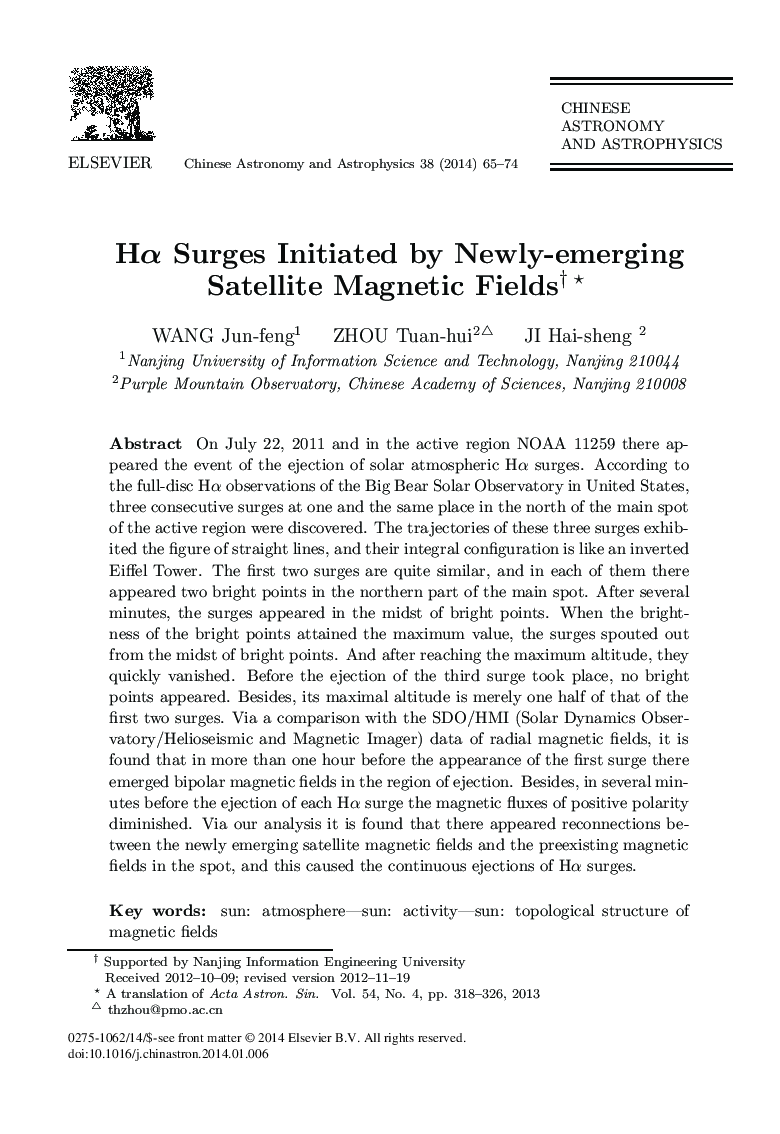| Article ID | Journal | Published Year | Pages | File Type |
|---|---|---|---|---|
| 1771723 | Chinese Astronomy and Astrophysics | 2014 | 10 Pages |
On July 22, 2011 and in the active region NOAA 11259 there ap- peared the event of the ejection of solar atmospheric Hα surges. According to the full-disc Hα observations of the Big Bear Solar Observatory in United States, three consecutive surges at one and the same place in the north of the main spot of the active region were discovered. The trajectories of these three surges exhib- ited the figure of straight lines, and their integral configuration is like an inverted Eiffel Tower. The first two surges are quite similar, and in each of them there appeared two bright points in the northern part of the main spot. After several minutes, the surges appeared in the midst of bright points. When the bright- ness of the bright points attained the maximum value, the surges spouted out from the midst of bright points. And after reaching the maximum altitude, they quickly vanished. Before the ejection of the third surge took place, no bright points appeared. Besides, its maximal altitude is merely one half of that of the first two surges. Via a comparison with the SDO/HMI (Solar Dynamics Obser- vatory/Helioseismic and Magnetic Imager) data of radial magnetic fields, it is found that in more than one hour before the appearance of the first surge there emerged bipolar magnetic fields in the region of ejection. Besides, in several min- utes before the ejection of each Hα surge the magnetic fluxes of positive polarity diminished. Via our analysis it is found that there appeared reconnections be- tween the newly emerging satellite magnetic fields and the preexisting magnetic fields in the spot, and this caused the continuous ejections of Hα surges.
